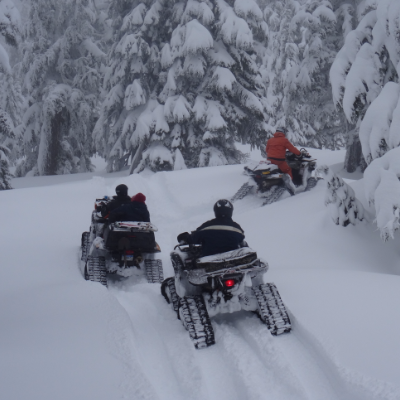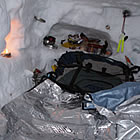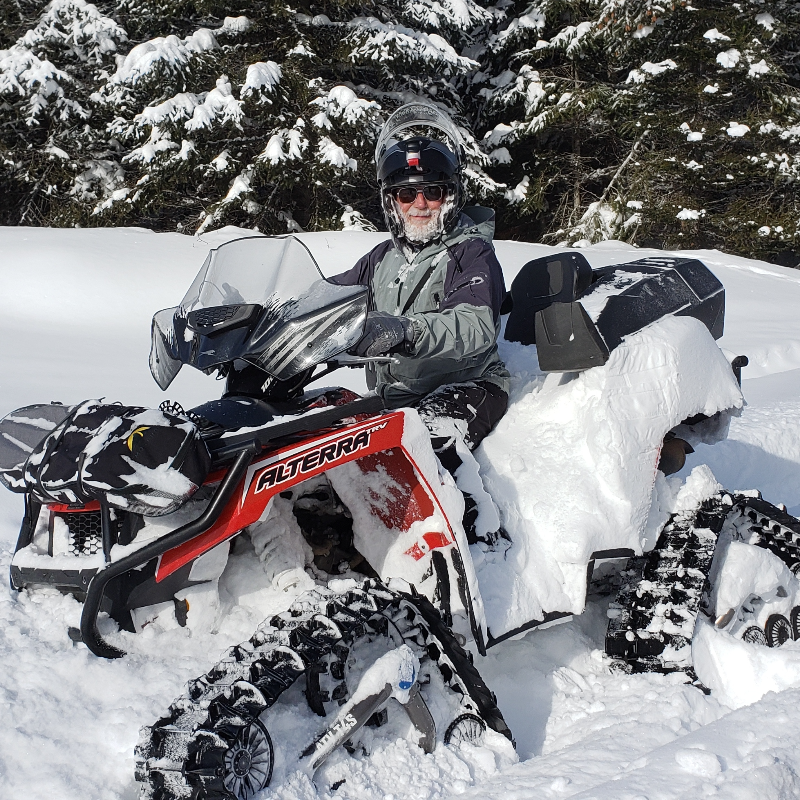The Canadian Avalanche Centre issues a bulletin called a Special Avalanche Warning (SPAW) when the avalanche forecast team believes there is an increased risk of avalanche accidents. So why is the bulletin hazard not just rated as High or red? Why is it just orange or Considerable?
There is an interesting difference between a SPAW and a bulletin rating of High. Let’s explore this a bit. It really matters, because a significant majority of Canada's fatal avalanche accidents occurred when the hazard was rated Considerable.
The definition of High or Extreme avalanche hazard (a red or black rating) means “Naturally triggered avalanches are likely or certain.” Nature is usually trying to adjust to significant changes in the weather. This might be due to a big snowfall, wind event or extended warm temperatures. In any case, during a period of High or Extreme hazard the snowpack is so unstable that avalanches are releasing by themselves. This is a good thing. Avalanches are only bad when someone or something gets in the way. A big cycle of natural activity usually cleans a slope of a problem layer, often leading to more stable conditions for the future.
It is easy during these touchy conditions to get caught in a serious avalanche, one that we trigger ourselves or one that is triggered naturally. However, statistically there are fewer people killed during High or Extreme bulletin ratings. How come? Many people heed the warnings and revise their activities. Often a period of High or Extreme means that we are in the middle of a storm and due to poor conditions there are fewer people out in the backcountry.
Also, nature is giving us tons of feedback that it is a dangerous time. Remember, it is “likely or certain” that we will see natural avalanche activity during this period. There may even be road closures as the Ministry of Transportation works to keep the highways free of avalanche snow. We may hear the local ski hills bombing or running some type of avalanche control to keep the ski runs safe.
The ratings of High or Extreme do not tend to last too long. Once the significant weather tapers off, so does the natural avalanche activity. This means that the avalanche hazard rating will tend to drop to Considerable. We still need to give this rating the respect it deserves. Without the obvious clues of naturally-triggered avalanches, people often get a false impression that the snowpack is now stable. Considerable does not mean orange or average or just in the middle. The CAC definition of Considerable is “Natural avalanches are possible, human triggered avalanches are likely.” This definition really nails the conditions. While it is “possible” for you to see a natural avalanche, it is not “likely” you will. It does mean that if you go into areas the bulletin has highlighted as Considerable hazard that it is “likely” for you to trigger this weakness. A skier or snowmobiler is simply an extra load to whatever stresses are naturally in the snowpack.
What are some other reasons a SPAW may be issued?
- Close call avalanches have been reported. People and avalanches follow predictable patterns.
- Small storms may be adding stress to existing weak layers. Loads may not be large enough to create a cycle of natural avalanches.
- Weather may be reducing strength in the snowpack. Significant heating can seriously weaken snowpack layers.
- Common safe areas are suspect, catching people by surprise. For example, avalanches may be active in the trees, on low angle slopes or travelling full path to valley bottom runout zones.
- Remote triggering may be possible. This means that slopes may be releasing at a distance from the trigger point. You don’t have to be on the big slope, just connected to the slope.
- Good weather and new snow will tempt people out to the slopes. Sunny weather on weekends and holidays bring more riders. With more traffic, people push the terrain even harder in search of fresh tracks.
- Avalanches may be stepping down to deeper weak layers, creating high consequence avalanches.
Staying safe
A Special Avalanche Warning does not mean that you cannot go riding in the backcountry. It means you should choose terrain with limited or no avalanche exposure. It is also recommended that you:
- Take an avalanche course to learn how to use the CAC bulletins and the Avaluator tool. These tools are useful, but they’re much more valuable if you have the skills to interpret and apply them. Successful understanding of conditions and terrain allows you to minimize your exposure to avalanche risk no matter the conditions. Avalanche courses are available in many areas; check http://www.avalanche.ca/cac/training/ast/courses
- Follow the guidance of the Avaluator and the pre-trip planning tools on the Canadian Avalanche Centre’s website when choosing terrain to match the forecast avalanche conditions. As the conditions get more serious, we want to choose terrain that not only avoids the current instabilities, but also has lower consequences: that is to say, fewer traps. Professionals have formally rated many of the popular snowmobile areas.
- Hire a qualified guide. Check out the British Columbia Commercial Snowmobile Operators Association at bccsoa.com and hire a guide. The companies listed on this website have professional-level avalanche training, tenure and emergency protocols, as well as business insurance and systems in place to assure you a safe and fun experience.
-
A Special Avalanche Warning does not mean that you cannot go riding in the backcountry. It means you should choose terrain with limited or no avalanche exposure. It is also recommended that you:
Lori and Randy Zacaruk have been presented with excellence awards from national and international organizations in recognition of their success in the promotion, development and delivery of avalanche safety programs for the snowmobile community. Zac’s Tracs has been active for 12 years in Western Canada and the northern United States, training thousands of snowmobilers, both adults and youth.






